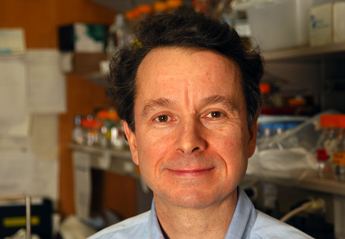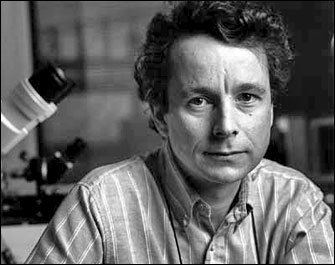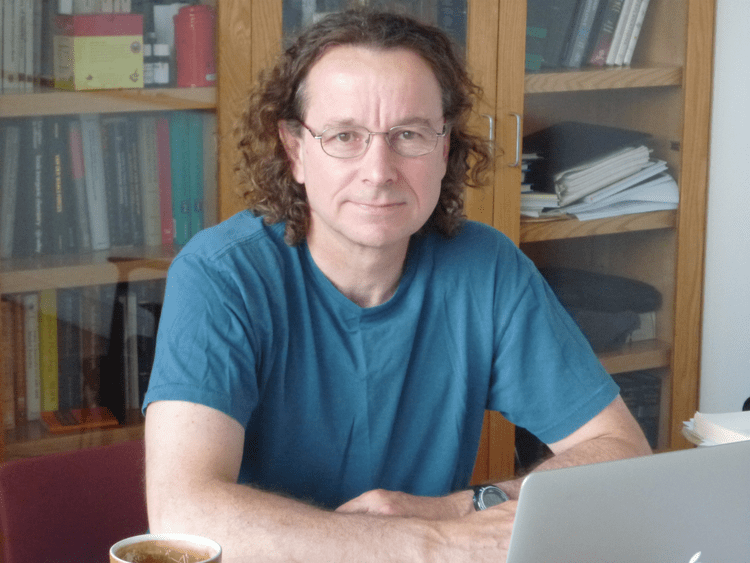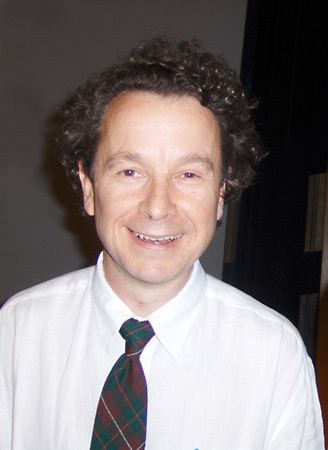Nationality United States Fields Chemistry Spouse Alice Lee (m. 1979) | Name Roderick MacKinnon Books Gaelic | |
 | ||
Notable awards | ||
being a scientist is like being an explorer roderick mackinnon nobel prize in chemistry 2003
Roderick MacKinnon (born 19 February 1956) is a professor of Molecular Neurobiology and Biophysics at Rockefeller University who won the Nobel Prize in Chemistry together with Peter Agre in 2003 for his work on the structure and operation of ion channels.
Contents
- being a scientist is like being an explorer roderick mackinnon nobel prize in chemistry 2003
- Nobel Lecture by Roderick MacKinnon
- Early life and education
- Career
- Scientific contributions
- Business activities
- References

Nobel Lecture by Roderick MacKinnon
Early life and education

MacKinnon was born in Burlington, Massachusetts and initially attended the University of Massachusetts Boston. MacKinnon then transferred to Brandeis University after one year, and there he received a bachelor's degree in biochemistry in 1978, studying calcium transport through the cell membrane for his honors thesis in Christopher Miller's laboratory. It was also at Brandeis where MacKinnon met his future wife and working-colleague Alice Lee.

After receiving his degree from Brandeis, MacKinnon entered medical school at Tufts University. He got his M.D. in 1982 and received training in Internal Medicine at Beth Israel Hospital in Boston. He did not feel satisfied enough with the medical profession, so in 1986 he returned to Christopher Miller's laboratory at Brandeis for postdoctoral studies.
Career

In 1989 he was appointed assistant professor at Harvard University where he studied the interaction of the potassium channel with a specific toxin derived from scorpion venom, acquainting himself with methods of protein purification and X-ray crystallography. In 1996 he moved to Rockefeller University as a professor and head of the Laboratory of Molecular Neurobiology and Biophysics where he started to work on the structure of the potassium channel. These channels are of particular importance to the nervous system and the heart and enable potassium ions to cross the cell membrane.
Scientific contributions

Potassium channels demonstrate a seemingly counterintuitive activity: they permit the passage of potassium ions, whereas they do not allow the passage of the much smaller sodium ions. Before MacKinnon's work, the detailed molecular architecture of potassium channels and the exact means by which they conduct ions remained speculative. In 1998, despite barriers to the structural study of integral membrane proteins that had thwarted most attempts for decades, MacKinnon and colleagues determined the three-dimensional molecular structure of a potassium channel from an actinobacteria, Streptomyces lividans, utilizing X-ray crystallography. With this structure and other biochemical experiments, MacKinnon and colleagues were able to explain the exact mechanism by which potassium channel selectivity occurs.
His prize-winning research was conducted primarily at the Cornell High Energy Synchrotron Source (CHESS) of Cornell University, and at the National Synchrotron Light Source (NSLS) of Brookhaven National Laboratory.
In 2007 he became a foreign member of the Royal Netherlands Academy of Arts and Sciences.
Business activities
MacKinnon is co-inventor with his friend and scientific collaborator, neurobiologist Bruce Bean of Harvard Medical School, of a dietary supplement for treating and preventing muscle cramps; they tested it in clinical trials and are co-founders a company to commercialize their invention, Flex Pharma. Christoph Westphal and Jennifer Cermak were co-founders as well. In 2014 the company described itself as a developer of drugs for neuromuscular disorders, pursuing treatments muscle cramping across a range of conditions including multiple sclerosis, ALS, and cramping in athletes, based on MacKinnon's Nobel Prize winning work on ion channels, and raised a $40 million Series A round. The company had a $86 million initial public offering in 2015 and revealed the dietary supplement product and its intent to go to market as a dietary supplement company at that time. In 2016, Flex Pharma released the consumer product "HotShot" as a dietary supplement for endurance athletes.
